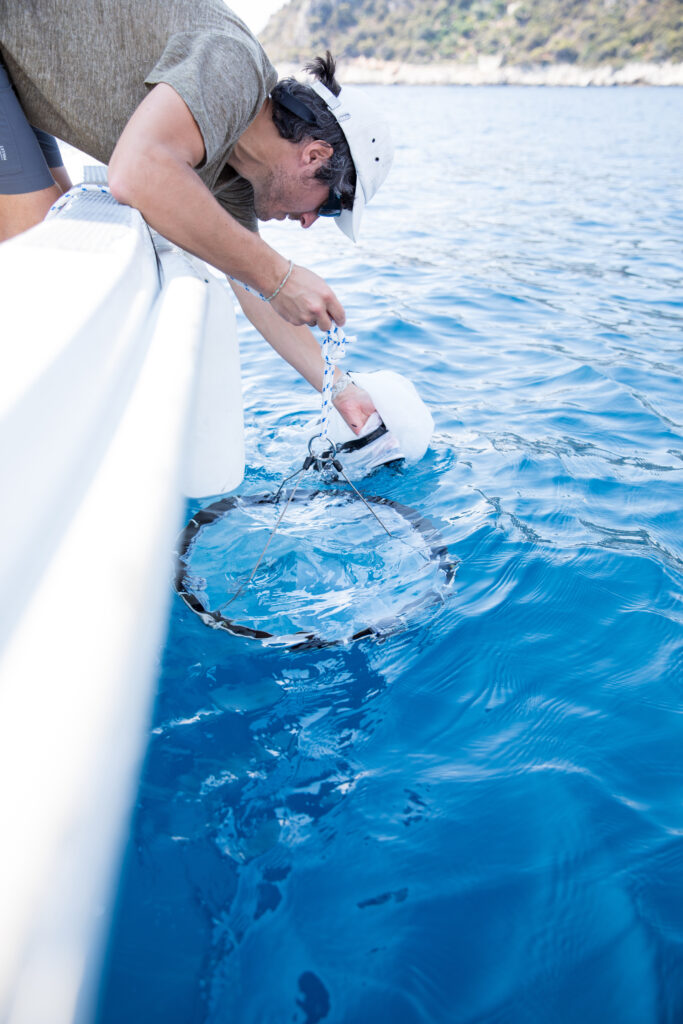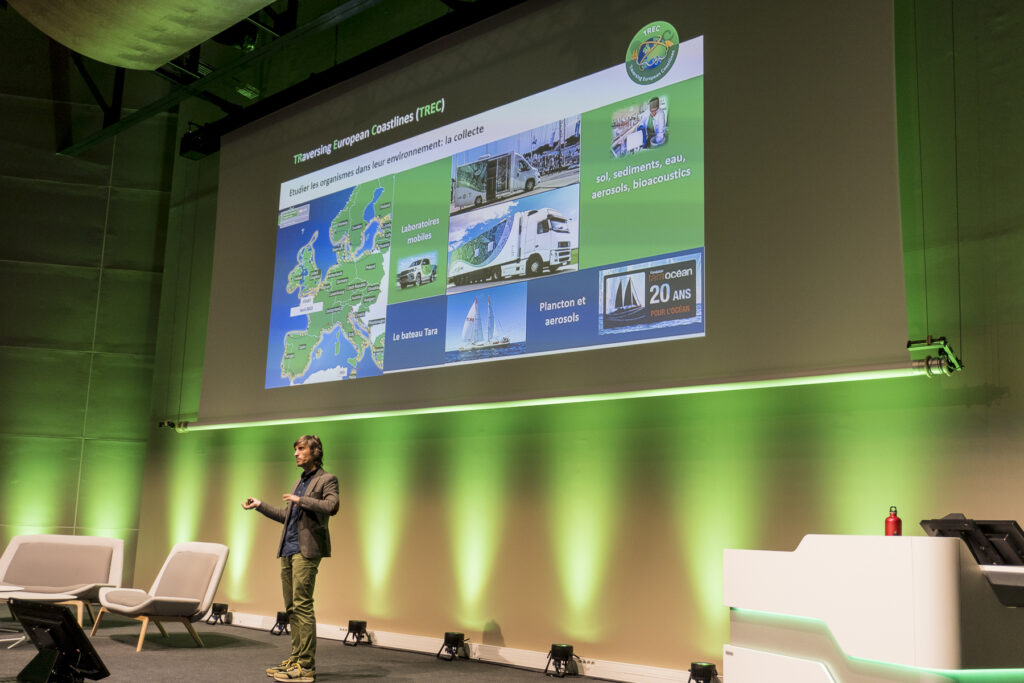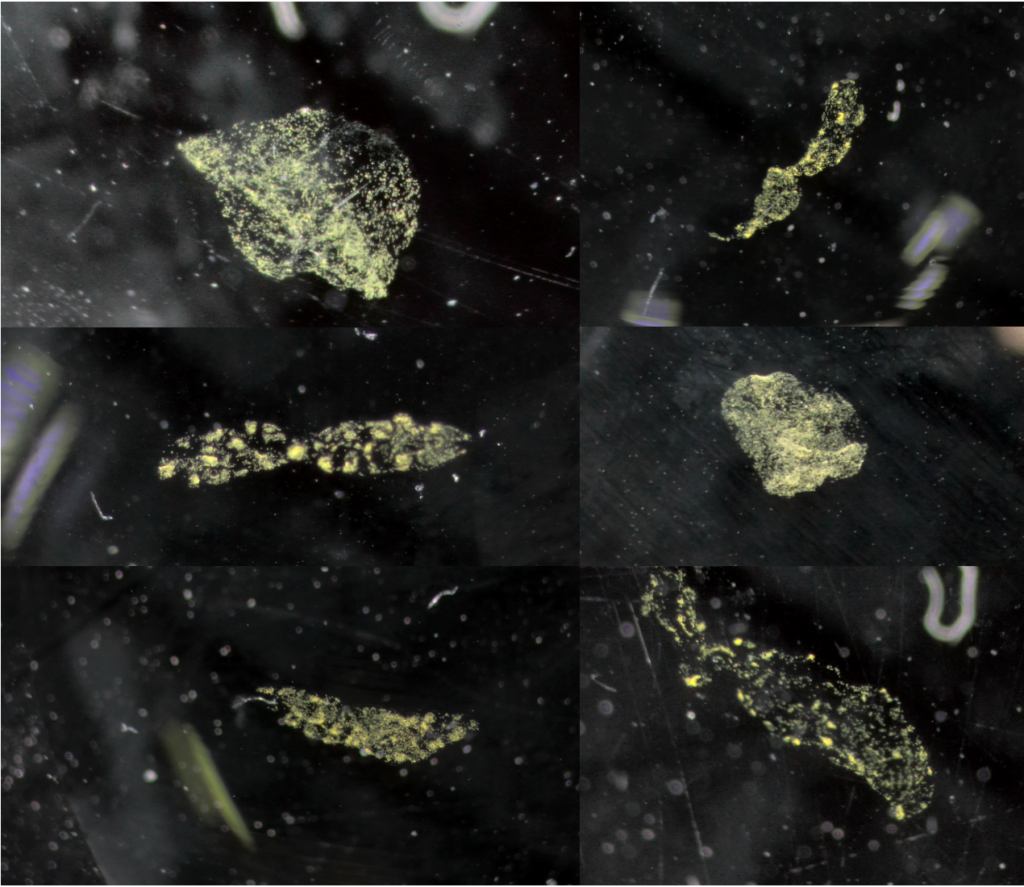BIOcean5D’s second work package aims to explore how key marine species shape, structure and influence their habitats. Within this, the study of Phaeocystis is led by Johan Decelle, CNRS researcher and leader of the Photosymbiosis team of the Cell & Plant Physiology Laboratory (LPCV) in Grenoble, France. “Phaeocystis is a widespread blooming marine microalga capable of causing harm to marine ecosystems while also beneficially supporting certain planktonic species,” explains Johan. “A Phaeocystis globosa bloom occurs every year, for example, in the North Sea, impacting fisheries, aquaculture, tourism and recreation,” continues Caroline Juery, postdoctoral researcher in the Photosymbiosis team.
The study of Phaeocystis by Johan and Caroline within BIOcean5D extends to its associated microbiomes: the community of microorganisms that can usually be found living together in any given habitat. “By studying Phaeocystis across different life stages (solitary, colonial, symbiotic), environmental conditions and ecological contexts, we hope to identify common or specific bacteria that can be systematically associated with this alga and might help explain its life cycle,” explains Caroline.
 Sampling in Villefranche-sur-Mer during a project to pilot the TREC expedition in 2021. Credit: Paola Bertucci/EMBL
Sampling in Villefranche-sur-Mer during a project to pilot the TREC expedition in 2021. Credit: Paola Bertucci/EMBL
TREC: a unique sampling opportunity
Phaeocystis samples were collected from multiple sites along Europe’s coasts within the framework of the TREC (Traversing European Coastlines) expedition, led by the EMBL, in core partnership with the Tara Ocean Foundation and the EMBRC. This unique expedition enabled the collection of a one-of-a-kind set of data, including a total of 70,000 samples from more than 100 sites along Europe’s coast, in order to study coastal ecosystems and their response to the environment.
 Presentation of sample collection within TREC by Johan Decelle during the French National Science Week in Grenoble. Credit: Cecilia Hughes/BIOcean5D
Presentation of sample collection within TREC by Johan Decelle during the French National Science Week in Grenoble. Credit: Cecilia Hughes/BIOcean5D
Bringing the laboratory to the ecosystem
Phaeocystis samples, either colonies or in symbiosis with Acantharia, were collected at the eight superstops of the TREC expedition at Roscoff (France), Tallinn (Estonia), Kristineberg (Sweden), Bilbao (Spain), Porto (Portugal), Barcelona (Spain), Naples (Italy) and Athens (Greece). At these locations, EMBL’s Advanced Mobile Laboratory (AML) brought cutting-edge technology directly to the field, enabling researchers to carry out advanced sample preparation, metadata acquisition and analysis immediately after sample collection.
“EMBL’s AML provided us with the unprecedented ability to collect and process planktonic cell samples in their natural environment,” explains Johan. The AML’s high-pressure freezer was used to flash freeze Phaeocystis samples to enable their later analysis using high-resolution microscopy imaging. “By connecting laboratory science with the ecological reality of the cells and systems we’re studying, we can reveal and better understand the biological features of these organisms within the context of their natural habitat,” continues Johan.
 Phaeocystis colonies collected at a sampling site near Roscoff (France)
Phaeocystis colonies collected at a sampling site near Roscoff (France)
Multidisciplinary collaboration
With sampling successfully completed, work is now underway to prepare the samples for comprehensive analysis through the combination of a number of complementary approaches. “LPCV contributes expertise about symbiotic relationships in plankton, in addition to the well-equipped microscopy platform at CEA,” explains Johan. Working in partnership with Genoscope (the French National Sequencing Centre) and EMBL Heidelberg, the Phaeocystis samples will be analysed using:
- Barcoding: sequencing of targeted amplified DNA sequences,
- Single-cell transcriptomics: sequencing of expressed sequences to reveal the functional microbiome,
- Electron microscopy: observation of bacteria or viruses at the nanoscale level of the colony or holobiont (host and associated microbiome).
Indeed, the collaborative multidisciplinary approach adopted to study Phaeocystis represents the ethos of the entire BIOcean5D project. By building a holistic understanding of marine biodiversity, BIOcean5D aspires to ultimately guide and support the sustainable management and long-term preservation of our oceans. “I really appreciate the sense of belonging and connection that comes with being a part of the BIOcean5D community,” explains Caroline. “It’s a very positive and enriching experience to be surrounded by different teams and colleagues with whom I have the opportunity to exchange ideas and also collaborate with now or in the future.”